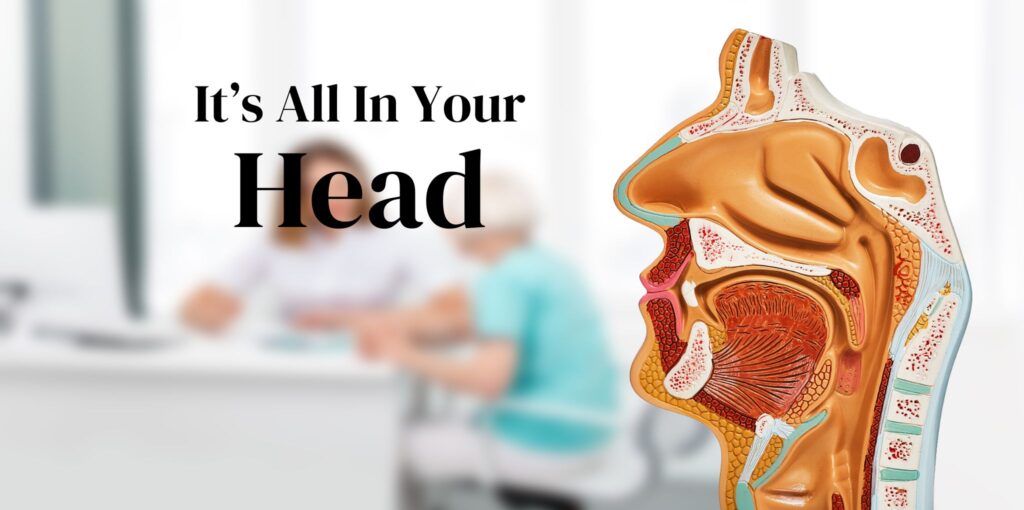YOUR MIGRAINE MAY BE COMING FROM YOUR NOSE
As far as misery in life, not much is worse than chronic headaches. The very word “headache” makes us think of not just pain, but also of any problem in our day-to-day life.
Literally billions of dollars are spent in this country annually to relieve headaches. Aspirin, Tylenol and Ibuprofen are the most common over the counter medications. Almost all of these drugs are used to relieve the pain without trying to find the cause.
As far as the sources of a headache the list of the possible causes is long. Very common causes are muscle tension in the neck and scalp, dehydration, eyestrain, lack of sleep or even high blood pressure.
While nasal congestion and sinus infection frequently lead to head and face pain, today I am writing about another source of headache that starts in the nose, related to abnormal anatomy there.
Inside everyone’s nose is a plate of bone and cartilage that divides the two nasal passages called the septum. This structure is basically the thin wall in the center of your nose. The nasal septum is bigger than most people think, as it runs top to bottom from just between your eyes to where your nose and lip join (about 2 inches) and goes backwards for almost 3 inches. It is supposed to be straight and in the middle. On each side wall of the nose are moist finger like air filter ridges called the nasal turbinates. When your nose suddenly stops up it’s because the turbinates get swollen.
Also on each sidewall of the nose, about two inches back is a very large nerve body. This nerve is part of the big network of nerves that provide sensations to the face and lining of the brain, called the trigeminal nerve. Any part of the trigeminal nerve that is inflamed will often cause facial pain or headache.
If the nasal septum is crooked, or deviated, especially in the back part near branches of the nerve I mentioned, it often has the effect of “pinching” or irritating the nerve endings. This sensation can start as just dull pressure but will often progress to severe shooting or radiating pain. The pain can be anywhere in the face including the cheek or even the ear region, but most commonly in the forehead. Most people think they have to have had a big injury like a car accident to cause a deviated septum, but in most folks who have it, it seems to just grow crooked without a known cause.
This type of headache above one eye may last for hours or days, and is very frequently diagnosed by doctors as a migraine. Medications for migraine, either over the counter (Excedrin Migraine) or prescription (Imitrex) will usually make the pain less. That’s why people with this problem, and their doctors feel that the migraine label fits.
The headache caused by the deviated septum putting pressure on nerve branches is typically above the eyebrow and almost always on the same side, left or right. It is usually worse when your nose is stuffy. While a migraine headache may be mainly in one part of the head, in someone who suffers from true migraines, the location should vary, not always be in the same spot.
This head and face pain coming from the nose has been known by doctors in my field of Ear, Nose and Throat for many years and was first described in 1908 by Dr. Sluder, and it is sometimes called Sluder’s neuralgia.
I am particularly interested in this type of headache, because it is one that can usually be cured. The source of the pain as I said is usually on the crooked part of the nasal septum that is sticking sideways. If that area, often a small bone spur is removed, the headache will go away. I personally have been able to relieve headaches in many people who were told they have migraines.
If you or someone you know has frequent headaches, especially if the pain is always in the same spot, it may be due to a crooked area in the nose, pinching a nerve. A very simple X-ray exam, a CT scan of the sinuses, will pick it up. Your family doctor can order one, or of course my office also can.
https://tomstarkmd.com/
18059 HWY 105 W Montgomery,TX77356
936-582-7000
